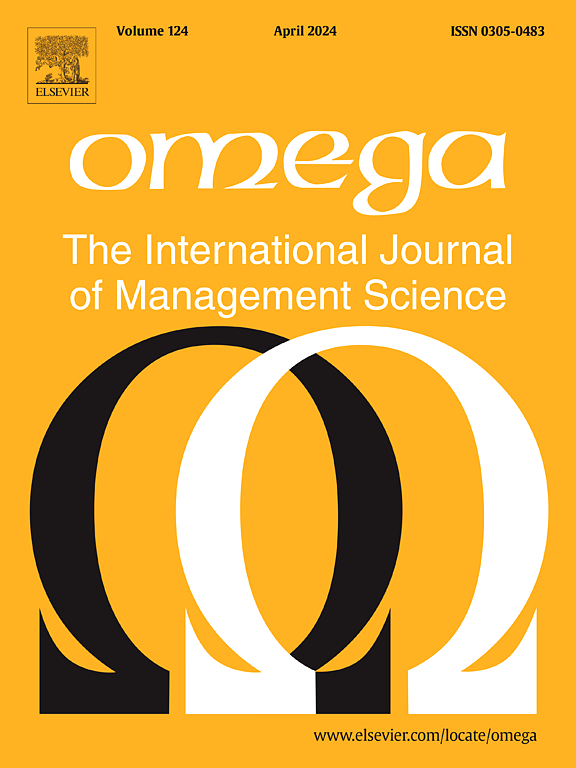设计以包裹柜系统作为收集和转运点的可持续投递网络
IF 6.7
2区 管理学
Q1 MANAGEMENT
Omega-international Journal of Management Science
Pub Date : 2024-09-26
DOI:10.1016/j.omega.2024.103199
引用次数: 0
摘要
无论是有人值守还是全自动的收货和投递点,都已成为最后一英里投递的流行解决方案。它们不仅为递送公司提供了运营优势,还为减轻包裹递送业务对环境的负面影响提供了一条途径。在本研究中,我们探索了一种新方法,即包裹储物柜系统具有双重作用:既是客户的收集点,也是快递公司的转运点。我们引入了位置-路由问题的变体,优化包裹柜系统的战略位置和容量大小,以及从这些点出发的递送路线。我们开发了一种高效的 "分支-价格 "算法,并将其应用于一个实际案例研究,该案例研究的重点是荷兰格罗宁根市一个住宅区的包裹柜投递网络的设计。我们的案例研究结果表明,包裹柜系统的双重作用大大缩短了送货车辆的行驶距离,非常适合应对未来可能增加的包裹收集需求,并降低了客户驾车前往包裹柜的可能性。本文章由计算机程序翻译,如有差异,请以英文原文为准。
Designing a sustainable delivery network with parcel locker systems as collection and transfer points
Collection and delivery points, both attended and fully automated, have emerged as a popular solution in last-mile delivery. They offer not only operational advantages for the delivery company but also present a pathway to mitigating the negative environmental impact of parcel delivery operations. In this study, we explore a new approach, where parcel locker systems have a dual role: as collection points for customers and as transfer points for the delivery company. We introduce a variant of the Location-Routing Problem, optimizing the strategic location and capacity size of parcel locker systems as well as the delivery routes from those points. We develop an efficient branch-and-price algorithm and apply it to a real-life case study that focuses on the design of a delivery network with parcel lockers in a residential neighborhood in the city of Groningen, the Netherlands. Our case study findings underscore that the dual role of parcel locker systems considerably reduces the travel distance of delivery vehicles, is well-suited to deal with potential future increase in demand for parcel collection, and reduces the likelihood of customers traveling to parcel locker by car.
求助全文
通过发布文献求助,成功后即可免费获取论文全文。
去求助
来源期刊

Omega-international Journal of Management Science
管理科学-运筹学与管理科学
CiteScore
13.80
自引率
11.60%
发文量
130
审稿时长
56 days
期刊介绍:
Omega reports on developments in management, including the latest research results and applications. Original contributions and review articles describe the state of the art in specific fields or functions of management, while there are shorter critical assessments of particular management techniques. Other features of the journal are the "Memoranda" section for short communications and "Feedback", a correspondence column. Omega is both stimulating reading and an important source for practising managers, specialists in management services, operational research workers and management scientists, management consultants, academics, students and research personnel throughout the world. The material published is of high quality and relevance, written in a manner which makes it accessible to all of this wide-ranging readership. Preference will be given to papers with implications to the practice of management. Submissions of purely theoretical papers are discouraged. The review of material for publication in the journal reflects this aim.
 求助内容:
求助内容: 应助结果提醒方式:
应助结果提醒方式:


